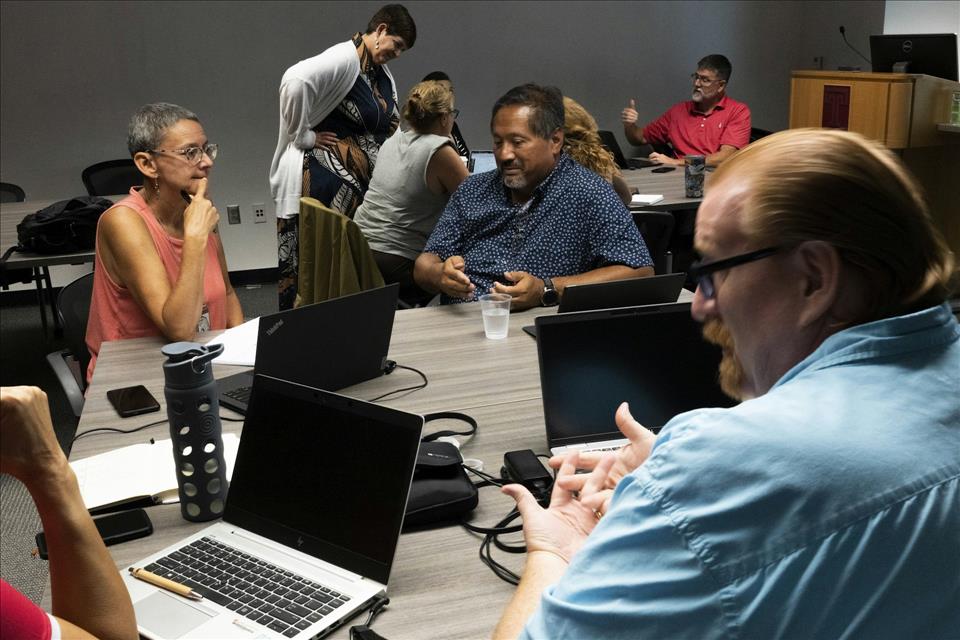
AI Could Worsen Inequalities In Schools Teachers Are Key To Whether It Will
The uncertainties accompanying the artificial intelligence onslaught come amid existing challenges the teaching profession has faced for years. Teachers have been working with increasingly scarce resources – and even scarcer time – while facing mounting expectations not only for their students' academic performance, but also their social-emotional development. Many teachers are burned out, and they're leaving the profession in record numbers.
All of this matters because teacher quality is the single most important factor in school influencing student achievement. And the impact of teachers is greatest for students who are most disadvantaged. How teachers end up using, or not using, AI to support their teaching – and their students' learning – may be the most crucial determinant of whether AI's use in schools narrows or widens existing equity gaps.
We have been conducting research on how public school teachers feel about generative AI technologies.
The initial results, which are currently under review, reveal deep ambivalence about AI's growing role in K-12 education. Our work also shows how inadequate training and unclear communications could worsen existing inequalities among schools.
A 'thought partner' for busy teachersAs part of a larger project examining AI integration in education, we interviewed 22 teachers in a large public school district in the United States that has been an early and enthusiastic adopter of AI. The district serves a multilingual and socioeconomically diverse student population, with over 160 languages spoken and approximately three-quarters of students eligible for free or reduced-price lunch.
The teachers who participated in our study spanned elementary, middle school and high school grade levels, and represented a variety of subject areas, including science, technology, engineering and mathematics, social studies, special education, and culturally and linguistically diverse education. We asked these teachers to describe how they first encountered generative AI tools, how they currently use them, and the broader shifts they have observed in their schools. Teachers also reflected on both the opportunities and challenges of using AI tools in their classrooms.
Mirroring a recent survey finding that AI has helped teachers save up to six hours per week of work, the teachers in our study pointed to AI's ability to create more space in the day for themselves and their students. Turning to AI for help writing lesson plans and assessments not only saves time, but it also gives teachers a tool for brainstorming ideas, helping them feel less isolated in their work. One high school teacher with over 11 years' experience reflected:
Why lack of training mattersHowever, not all teachers felt well-equipped to benefit from AI. Much of what they told us boiled down to a lack of resources and other professional support. An elementary school classroom teacher explained:
Many teachers underscored the need for – and current lack of – professional development offerings to help them understand and integrate AI into their teaching.
Research on previous waves of technological innovations shows that under-resourced schools serving disadvantaged students are typically the least well-equipped to provide teachers with the professional support they need to make the most of new technologies.
Because well-resourced schools are far more likely to offer such support, the introduction of new technologies in schools tends to reinforce existing inequities in the education system.
When it comes to AI, well-resourced schools are best positioned to give teachers time, support and encouragement to“tinker” with AI and discover how and whether it can support their teaching and learning goals.
'You need a relationship' to learnOur research also uncovered the importance of preserving the relational nature of teaching and learning, even – or perhaps especially – in the age of AI. As one middle school social studies teacher observed:
Even as schools integrate AI into classwork, teachers still need to learn how to implement the technology to help their students learn. Jae C. Hong/AP Images
Here again, prior research shows us that teachers in well-resourced schools are better equipped to introduce new technologies in ways that augment rather than undermine the relational dimensions of teaching and learning. And again, teachers are crucial in determining how and whether AI, like all new technologies, is used to support their teaching and student learning.
That's why we believe the practices established during this current period of rapid AI development and adoption will profoundly influence whether educational inequities are dismantled or deepened.
Grounded in the classroomGoing forward, we see the need for research to examine how generative AI is changing teachers' practice and relationship to their work. Their input can inform practices that empower teachers as professionals and advance student learning.
This approach requires adequate institutional support at the school and district levels. It also means listening to the real experiences of teachers and students instead of responding to the promised benefits touted by education technologies companies.

Legal Disclaimer:
MENAFN provides the
information “as is” without warranty of any kind. We do not accept
any responsibility or liability for the accuracy, content, images,
videos, licenses, completeness, legality, or reliability of the information
contained in this article. If you have any complaints or copyright
issues related to this article, kindly contact the provider above.


















Comments
No comment